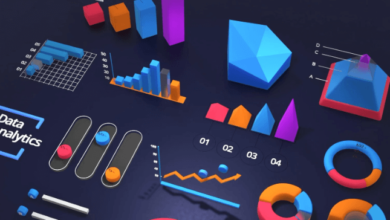What is Face Authentication? A Comprehensive Guide

Technology has moved at an unstoppable pace in the last fifty years, completely changing global societies. Moreover, communication networks are making the world more connected than ever, which makes it possible to digitize almost everything. This has many benefits and risks that need to be dealt with. Face authentication is still a key part of keeping everyone safe in this mix of analog and digitalization.
In this regard, biometrics and artificial intelligence technologies work well together to make a strong team that lets us add protection to digital processes where we must be sure of a person’s identity. This article aims to give a useful overview of the most important parts of face recognition solutions.
What Is Face Authentication?
Face authentication or recognition is the process of instantly figuring out who someone is by analyzing a picture of their face. From taking the digital picture to making the final choice of the person’s identity, there are a lot of steps in this process. To cover all steps of the process, different technologies must be used. Biometrics and deep learning are two important ones:
Biometrics
It is a set of methods that can be used to figure out the identity of a person by analyzing their voice, eyes, fingerprint, DNA, etc., or their behavior (signature, walk, how they interact with computer platforms, etc.). Not all biological features are easy to get and don’t give the same level of trust, so it’s important to find a balance between these things while considering what the end system needs.
Machine Learning
It is a critical part of AI that tries to provide computers the capacity to make decisions in situations they were designed for. Since it’s always necessary to deal with new situations ( identities) based on training from the past, digital identity verification can only be looked at through the lens of machine learning methods.
Mechanism of Action Behind Face Recognition Solution
It can now be figured out how face authentication is performed. It’s usually done with AI tools, which is the fastest way to do it. The following five are the five key steps in the mechanism behind face recognition verification:
Face Detection
As discussed previously, facial authentication has a significant role in identity verification. However, initially, the machine must first find the face(s) in a picture to see if there are any at all. This information is further utilized in the successive steps.
Face Alignment
Once a face has been formed and found, the next step is to determine its position. Current face recognition technology requires faces to be clearly shown (not hidden by clothes or other items) while gazing towards the direction of the camera for better accuracy. Individuals can teach a machine learning model to find the important parts of a face (chin, pupils, etc.) by gently turning the picture to center it and get a front-facing position.
Face Measurement & Extraction
Next, once a face is found and its main features are visible in the picture, the traits needed for recognition of faces can be taken. This includes, but isn’t limited to, the size of the eyes, nose, mouth, etc. After this step, the collected traits will be compared to the database to find matches that are close.
Recognition
Here starts the real process of face authentication. A final program will look for possible matches by comparing the measures and data taken from the traits to the database.
Verification
Finally, a full match may be confirmed by comparing the facial characteristics of the two images. However, face authentication is only successful if a perfect match can be located in the database. The success of every machine learning system depends on the quality and amount of the data used to train the system. In addition, individuals can use their own data or publicly available datasets while training the model.
Key Takeaways
Facial recognition systems are now deeply embedded in our everyday lives, and this trend is only projected to continue as the accuracy and utility of real-time face authentication improve. The few instances of face recognition we examined today made it quite clear that they are used everywhere, from preserving our personal privacy in gadgets to assisting in monitoring crime locally and nationally. In conclusion, as biometric face recognition technology and detection procedures continue to grow through breakthrough discoveries and technical inventions, they offer compelling opportunities for enhanced identification processes across numerous fields. Adopting these improvements while ensuring privacy measures will be essential as we drive into a future where facial recognition verification becomes highly incorporated into our lives.





